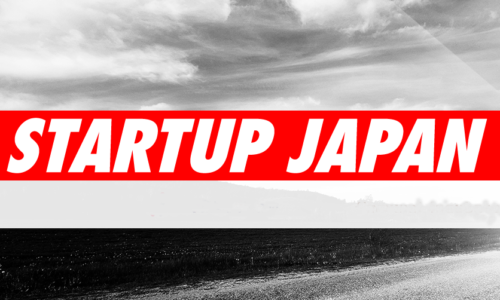1. Bajaj Auto Limited Vs. TVS Motor Company Limited JT 2009 (12) SC 103:-
Speedy disposal of Intellectual property rights cases
This case involved the controversy regarding the unauthorized application of the patent of the DTSi technology. The case became very vital regarding not only the financial stakes of the parties but also regarding the application of the doctrine of pith and marrow also termed as Doctrine of Equivalents.
This case was filed before the Madras High Court in 2007. The plaintiffs (Bajaj Auto Ltd), along with the state of Maharashtra alleged the defendants (T.V.S. Motor Company Ltd.) of infringement of the patents of the plaintiffs, which apprehended the invention of the technology of advanced internal combustion engine. The case engaged the questions of patent infringement by the defendant and the damages for the same. Furthermore, the case threw light upon the argument regarding justification of the risks issued by the defendant of the same case.
The plaintiffs sought remedy of permanent injunction for obstructing the defendants from using the technology or invention prescribed in the patents of the plaintiffs; and for obstructing them from marketing, selling offering for sale or exporting 2/3 wheelers (including the proposed 125cc TVS FLAME motorcycle) that consisted of the disputed internal combustion engine or product that infringed the patent. Damages for infringement of the patent were also claimed by the Plaintiffs.
The Supreme Court of India by this landmark judgement directed all the courts in India for speedy trial and disposal of intellectual property related cases. In this two-year-old dispute involving two companies, which had been locked in a patent dispute over the use of a twin-spark plug engine technology, the Supreme Court observed that suits relating to the matters of patents, trademarks and copyrights are pending for years and years and litigation is mainly fought between the parties about the temporary injunction. The Supreme Court directed that hearing in the intellectual property matters should proceed on day to day basis and the final judgment should be given normally within four months from the date of the filing of the suit. The Supreme Court further directed to all the courts and tribunals in the country to punctually and faithfully carry out the aforesaid orders.
2. Novartis v. Union of India (2013) 6 SCC 1 :-
Rejection of a patent for a Drug which was not ‘inventive’ or had an superior ‘efficacy’-
Novartis filled an application to patent one of its drugs called ‘Gleevec’ by covering it under the word invention mentioned in Section 3 of the Patents Act,1970. The Supreme Court rejected their application after a 7 year long battle by giving the following reasons: Firstly there was no invention of a new drug, as a mere discovery of an existing drug would not amount to invention. Secondly Supreme Court upheld the view that under Indian Patent Act for grant of pharmaceutical patents apart from proving the traditional tests of novelty, inventive step and application, there is a new test of enhanced therapeutic efficacy for claims that cover incremental changes to existing drugs which also Novartis’s drug did not qualify. This became a landmark judgment because the court looked beyond the technicalities and into the fact that the attempt of such companies to ‘evergreen’ their patents and making them inaccessible at nominal rates.
3. F. Hoffmann-La Roche Ltd vs Cipla Ltd., Mumbai Central,:-
First Patent Litigation in India post India’s 2005 Product Patent Regime which included public interest and pricing issues.
Over the years India has seen many patent disputes between Foreign Multinational Pharmaceutical companies and Indian generic drug companies. But the suit between Roche and Cipla has surely set the standards when it comes to a patent infringement suit.
In this case, two plaintiffs, namely, F. Hoffmann-La Roche Ltd. and OSI Pharmaceuticals Inc., filed the suit for permanent injunction restraining infringement of patent, rendition of accounts, damages and delivery against Cipla Ltd. Mumbai. Indian Generic manufacturer Cipla won this landmark case in the Delhi High Court. The case is the first Patent Litigation in India post India’s 2005 Product Patent Regime which included public interest and pricing issues in addition to India’s Section 3d that prevents evergreening. The case was followed by Pharma Giants worldwide.
Roche sued Cipla in 2008 before Delhi High Court claiming that Cipla’s generic product Erlocip violates former’s Indian ‘774 patent claiming “Erlotinib Hydrocloride”. The trial Judge rejected Roche’s appeal to grant interim injunction restraining Cipla from selling generic version of Tarceva on the grounds of public interest and the fact that there was an ongoing patent revocation proceedings against ‘774 patent. Cipla’s generic version costs about 1/3rd of Roche’s patented drug. Roche’s subsequent appeal to Division Bench also failed when not only did the bench uphold the findings of Trial Judge but also imposed costs on Roche for suppression of material patent information about Roche’s later filed application in India (IN/PCT/2002/00507/DEL). This was the Patent Application which was actually on Polymorph Form B of Erlotinib Hydrocloride but was rejected in 2008 following the opposition filed by Cipla primarily on Section 3d. Cipla argued that Tarceva corresponds to Polymorphic Form B (which is not a product of ‘774 patent but a ‘507 rejected application) and that it is Form B which is more stable and suitable for solid oral dosage form than the compound disclosed in ‘774 patent comprising a mixture of Forms A and B. Roche’s subsequent appeal before the Supreme Court (SC) challenging the order passed by the division bench got dismissed due to the ongoing trial at the Delhi High Court.
4. Dr Snehlata C. Gupte v. Union of India & Ors (W.P. (C) No 3516 and 3517 of 2007) Delhi HC) :-
What Shall Be The Actual Date Of Grant Of A Patent?
This case was instrumental in determining when a patent can said to be granted under the Patent Act 1970 (the Act). This lack of clarity led to a scrutiny of the relevant provisions the Act and also the existing process with a time gap between the grant and the issuance of the patent certificate. The Delhi High Court, while holding that the date of grant of a patent is the date on which the Controller passes an order to that effect on the file, noted that the language, “a patent shall be granted as expeditiously as possible” (u/s 43) does point out that a patent has to be granted once it is found that either the application is not refused in a pre-grant opposition or otherwise is not found in contravention of any provision of the Act.
At the core of the legal challenge was the existing process, which resulted in a time gap between the grant of a patent and the issue of the patent certificate. The court held that the date of the grant of a patent is the date on which the controller passes an order to that effect on the file i.e. on the day in which the Controller makes a decision to grant a patent. The issue of a certificate at a later date is then nothing more than a mere formality.
The court also came down strongly against the practice of filing serial pre-grant oppositions. through aliases, a practice now fairly common in most pharmaceutical patent cases.
Therefore, the decision taken by the Controller on the file is the determining event for ascertaining the date of grant of patent and the acts of sealing of the patent and entering the same in the Register are ministerial acts evidencing the grant of patent.
5. Bayer Corporation vs Union Of India :-
India’s First Compulsory License
On March 9, 2012, the Indian Patent Office granted its first Compulsory License to Natco Pharma Ltd. for producing generic version of Bayer Corporations’s patented medicine Nexavar (Sorafenib Tosylate), which is used in the treatment of Liver and Kidney cancer. While the multinational giant was selling the drug at INR 2.80 lakh for a month’s course, Natco promised to make available the same at a price of about 3 % (INR 8800) of what was charged by Bayer. Natco was directed to pay 6 percent of the net sales of the drug as royalty to Bayer. Among other important terms and condition of the non assignable, non exclusive license were directions to Natco to manufacture the patented drug only at their own manufacturing facility, selling the drug only within the Indian Territory and supplying the patented drug to at least 600 needy and deserving patients per year free of cost.
Aggrieved by the Controller’s decision, Bayer immediately moved to the Intellectual Property Appellate Board (IPAB) for stay on the orderalleging that the grant of compulsory license was illegal and unsustainable. The Board rejected Bayer’s appeal holding that if stay was granted, it would definitely jeopardize the interest of the public who need the drug at the later stage of the disease. It further held that the right of access to affordable medicine was as much a matter of right to dignity of the patients and to grant stay at this juncture would really affect them.
Bayer then filed an appeal challenging the compulsory licence granted to Natco by the Controller-General. The Board stated that the invention must be available to the public at a reasonably affordable price and if not, compulsory licence can be issued and observed that the Sub-sections (a), (b) and (c) of Section 84(1) are separated by the disjunctive ‘or’ and therefore, even if one conditionis satisfied, the Controller will be well within his rights to order compulsory licence.
The Board further noted that The R&D costs and the prices of other drugs do not assist in deciding what the public can afford reasonably. It stated that the reasonably affordable price necessarilyhas to be fixed from the view point of the public and the word ‘afford’ itself indicates whether the public can afford to buy the drug.
It also stated that even if it takes the appellant’s own number (i.e. the number of affected patients) it finds that the supply made by it cannot be said to be adequate and the price definitely is the factor that will determine whether the public will reach out for a particularinvention.
The Board held that the Controller was right in holding that the sales of the drug by the appellant at the price of about 280,000/- wasalone relevant for the determination of public requirement and he was also right in considering the purchasing capacity of the public and the evidence available to conclude that the invention was not reasonably affordable to the public.
On the percentage of royalty that was to be paid by the Respondent to the Appellant (6% that was fixed by the Controller), IPAB increased it by 1 percent but did not change any other terms and conditions of the licence.
The IPAB dismissed the appeal and confirmed the grant of Compulsory license stating that it has dealt with each of the issue indetail in view of the significance of the order of compulsory licence made in India for the first time.







